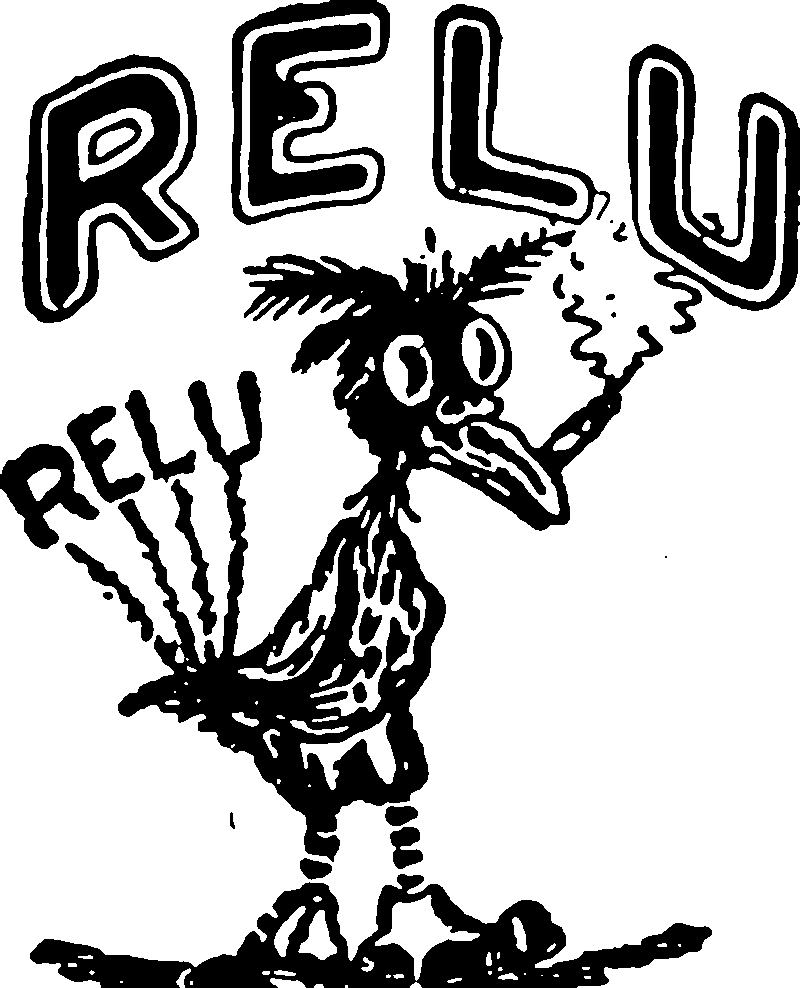There is a cottage industry built upon showing that neural networks are reasonably universal function approximators with various nonlinearities as activations, under various conditions. Usually, we take it as a given that the particular activation function is not too important.
Sometimes, we might like to play with the precise form of the nonlinearities, even making the nonlinearities themselves directly learnable. The rationale might be that some function shapes might have better approximation properties with respect to various assumptions on the learning problems, in a sense which I will not attempt to make rigorous now, vague hand-waving arguments being the whole point of deep learning. Taking that to its extreme and learning activations instead of weights, leads to Kolmogorov-Arnold networks.
I think a part of this field has been subsumed into the stability-of-dynamical-systems setting? Or we do not care because something-something BatchNorm?
ReLU
The current default activation function is ReLU, i.e. \(x\mapsto \max\{0,x\}\), which has many nice properties. However, it does lead to piecewise linear spline approximators. One could regard that as a plus (Unser 2019) but OTOH that makes it hard to solve differential equations.
Differentiable activations
Sometimes, then, we want something different. Other classic activations such as \(x\mapsto\tanh x\) have fallen from favour, supplanted by ReLU. However, differentiable activations are useful, especially if higher-order gradients of the solution will be important, e.g. in implicit representation NNs. Many virtues of differentiable activation functions for that purpose are documented Implicit Neural Representations with Periodic Activation Functions. Sitzmann et al. (2020) argues for \(x\mapsto\sin x\) on the basis of various handy properties. Ramachandran, Zoph, and Le (2017) advocate Swish, \(x\mapsto \frac{x}{1+\exp -x}.\)
Other fun things, SELU, the “self-normalising” SELU (scaled exponential linear unit) Klambauer et al. (2017).
All these, AFAICT require careful initialization.
Learnable activations
Learnable activations are a thing, e.g. Ramachandran, Zoph, and Le (2017), Agostinelli et al. (2015), Lederer (2021), achieving their apotheosis in Kolmogorov-Arnold Networks.
Kolmogorov-Arnold networks
A cute related case of a learnable activation function is the Kolmogorov-Arnold network (Liu, Wang, et al. 2024), where the ever edge learns an activation function and there are no other weights. This has various nice properties such as being easy to compress, somehow. See Kolmogorov-Arnold Networks for a deeper treatment.
References
Agostinelli, Hoffman, Sadowski, et al. 2015.
“Learning Activation Functions to Improve Deep Neural Networks.” In
Proceedings of International Conference on Learning Representations (ICLR) 2015.
Arjovsky, Shah, and Bengio. 2016.
“Unitary Evolution Recurrent Neural Networks.” In
Proceedings of the 33rd International Conference on International Conference on Machine Learning - Volume 48. ICML’16.
Cho, and Saul. 2009.
“Kernel Methods for Deep Learning.” In
Proceedings of the 22nd International Conference on Neural Information Processing Systems. NIPS’09.
Glorot, Bordes, and Bengio. 2011.
“Deep Sparse Rectifier Neural Networks.” In
Aistats.
Godfrey. 2019.
“An Evaluation of Parametric Activation Functions for Deep Learning.” In
2019 IEEE International Conference on Systems, Man and Cybernetics (SMC).
Goodfellow, Warde-Farley, Mirza, et al. 2013.
“Maxout Networks.” In
ICML (3).
Hayou, Doucet, and Rousseau. 2019.
“On the Impact of the Activation Function on Deep Neural Networks Training.” In
Proceedings of the 36th International Conference on Machine Learning.
———, et al. 2016.
“Identity Mappings in Deep Residual Networks.” In
arXiv:1603.05027 [Cs].
Hochreiter. 1998.
“The Vanishing Gradient Problem During Learning Recurrent Neural Nets and Problem Solutions.” International Journal of Uncertainty Fuzziness and Knowledge Based Systems.
Hochreiter, Bengio, Frasconi, et al. 2001.
“Gradient Flow in Recurrent Nets: The Difficulty of Learning Long-Term Dependencies.” In
A Field Guide to Dynamical Recurrent Neural Networks.
Klambauer, Unterthiner, Mayr, et al. 2017.
“Self-Normalizing Neural Networks.” In
Proceedings of the 31st International Conference on Neural Information Processing Systems.
Laurent. n.d. “The Multilinear Structure of ReLU Networks.”
Lee, Bahri, Novak, et al. 2018.
“Deep Neural Networks as Gaussian Processes.” In
ICLR.
Liu, Wang, Vaidya, et al. 2024.
“KAN: Kolmogorov-Arnold Networks.”
Pascanu, Mikolov, and Bengio. 2013.
“On the Difficulty of Training Recurrent Neural Networks.” In
arXiv:1211.5063 [Cs].
Rahaman, Baratin, Arpit, et al. 2019.
“On the Spectral Bias of Neural Networks.” arXiv:1806.08734 [Cs, Stat].
Ramachandran, Zoph, and Le. 2017.
“Searching for Activation Functions.” arXiv:1710.05941 [Cs].
Sitzmann, Martel, Bergman, et al. 2020.
“Implicit Neural Representations with Periodic Activation Functions.” arXiv:2006.09661 [Cs, Eess].
Srivastava, Greff, and Schmidhuber. 2015.
“Highway Networks.” In
arXiv:1505.00387 [Cs].
Unser. 2019.
“A Representer Theorem for Deep Neural Networks.” Journal of Machine Learning Research.
Wisdom, Powers, Hershey, et al. 2016.
“Full-Capacity Unitary Recurrent Neural Networks.” In
Advances in Neural Information Processing Systems.
Yang, and Salman. 2020.
“A Fine-Grained Spectral Perspective on Neural Networks.” arXiv:1907.10599 [Cs, Stat].
